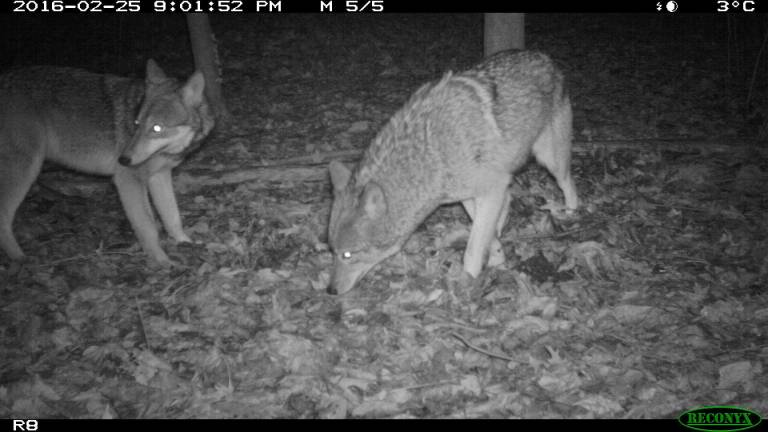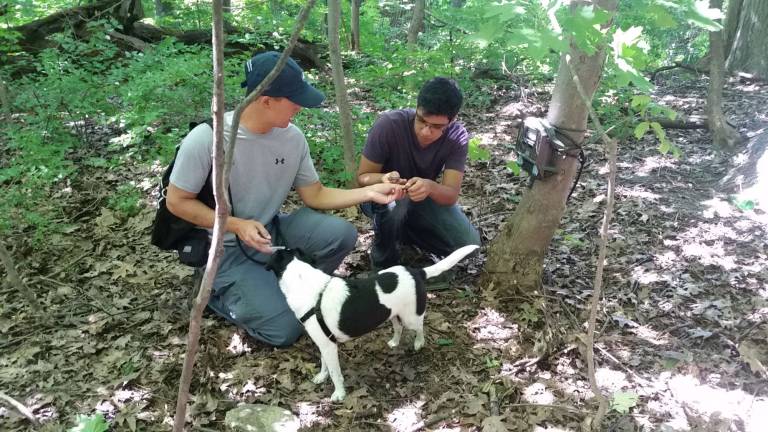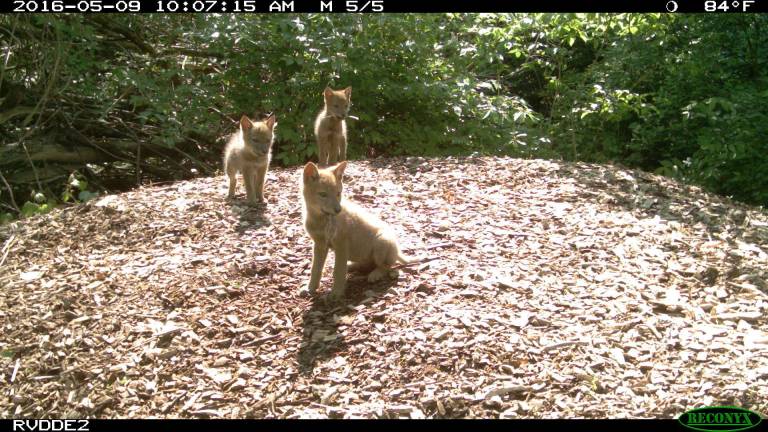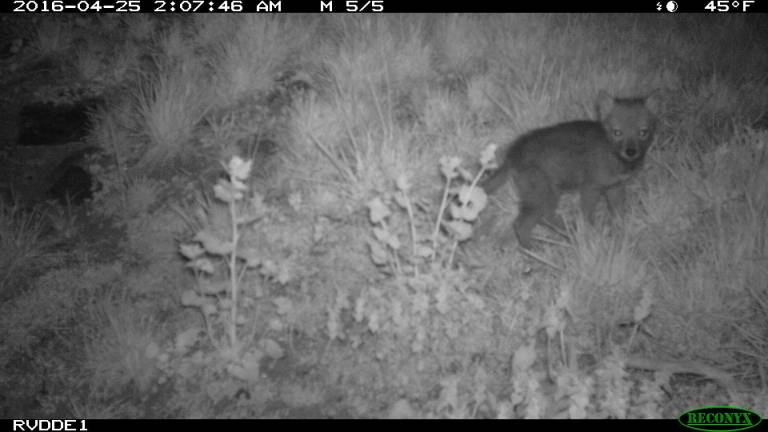Tracking Coyotes in new york




When Ferdie Yau quit his job as a NYC ecologist in 2013 to focus full time on his dog-training business, he hoped to return to wildlife conservation one day. As fate would have it, he didn’t have to wait long.
About a year later, Yau received a call from Mark Weckel, a conservation biologist at the Upper West Side’s American Museum of Natural History and co-founder of Gotham Coyote Project (GCP), a collaborative research effort to better understand the elusive coyote and its role in our urban ecosystem. The two had had the same graduate research advisor while studying jaguars in Belize, and Weckel thought Yau could employ his dog-training expertise to train dogs to detect coyote scat (droppings) in the field.
“I have always wanted to work with animals, and have been incredibly lucky to have had the experiences I’ve had, but this was exactly the type of opportunity that I was looking for — a way to use my skills as a dog trainer for wildlife conservation,” says Yau.
Despite Yau’s vast background with animals, including working with Central Park’s infamous polar bears Gus and Ida, he had never done scent work before. He enlisted a “Nose Work” instructor to help him learn the basics of teaching a dog to detect a specific scent, and from there developed a program to train the dogs for the unique challenges of NYC fieldwork. In part, the process entailed placing a delicious treat alongside various coyotes’ scat from the wild as well as scat provided by the Queens Zoo in a cardboard box one-by-one so that the dog learns to associate the treat with the scat. Then, overtime, he made the treat smaller and smaller until there was just the scat scent to hunt.
The DNA from scat helps the researchers understand population — where the NYC coyotes are coming from, who is related to whom, how many coyotes are there — as well as learn more about the ecology of urban coyotes by examining their diet.
“We also learn how they’re surviving in NYC by what are they’re consuming, whether they’re providing a benefit for us by eating a lot of rats, for example, or if there are potential conflicts, though the threat to human safety is extremely low,” says Yau. “Coyotes usually become problematic because people feed them intentionally or unintentionally — through garbage or food left out for stray cats, for example — and they become habituated to humans.”
There are currently a total of four dogs in the invite-only training program, with Scout, Yau’s energetic 9-year-old Jack Russell Terrier mix, the only dog “field ready.” Alas, finding the right kind of dog for the challenges of fieldwork can be tricky.
“Dogs should exhibit an intense focus and drive to search for a toy or food, and also be able to focus on the handler in an extremely distracting environment like NYC. It can be a hard combination to find. The ideal dogs are usually the working breeds, either full-bred or mixes,” says Yau.
The lion’s share of scat hunting is conducted in the Bronx, where most of NYC’s coyotes currently reside and where the first was spotted in 1995. That said, the researchers expect the coyotes to eventually colonize Long Island, the only remaining large land mass in the nation without a breeding population. GCP’s long game is to be prepared for the coyotes when they arrive out east, seizing the unique opportunity to collect real-time data when they do.
But to get there, the coyotes — one of the most resilient animals in North America — must navigate the concrete jungle that is New York City, an urban environment difficult to traverse because of its traffic and human activity. The researchers and educators of the Gotham Coyote Project are determined to help the coyotes do so while also keeping New Yorkers safe. And as the song goes, if they can make it here, they can make it anywhere.
In addition to analyzing scat, camera traps play an integral part in the overall mission of GCP, tracking coyotes across the city as they colonize all five boroughs and Long Island. GCP coordinates efforts with NYC Parks and the Urban Park Rangers to run the motion-triggered cameras in Central Park (there’s one hidden in The Ramble) and Inwood Hill Park. In 2014, Yau expanded surveillance to Riverdale, where he resides and also mentors city high school students to help with GCP’s efforts through the Woodland Ecology Research Mentorship program (WERM) during the summer.
Not long ago, Yau captured pictures of pups on camera — at about 4 weeks old, the youngest they’d ever recorded. The family had made a den in a private residential neighborhood just north of the city. About a week after the discovery, Yau received a call from the president of the neighborhood homeowners’ association saying two coyotes had chased a resident and his dog.
“Since I’d just seen the pictures of the pups, I realized that the parents were likely defending a nearby den — four-week-old pups don’t wander far — because coyotes usually avoid humans whenever they can,” says Yau.
Yau spoke to the president and NYC officials to coordinate an effort to educate residents about how to live with coyotes and steer clear of negative interactions.
“Some residents were understandably very scared, but weeks later when the pups were mobile, the entire family disappeared like ghosts, moving to a quieter location just as we had predicted,” says Yau. “We assuaged fears and left the coyote family alone, likely saving their lives because removal doesn’t usually end up well for them. We hope to teach New Yorkers how to safely live with and enjoy the amazing wildlife around us, because like it or not the city’s newest immigrant is here to stay.”
To learn more about Ferdie Yau and his work with and for animals and wildlife conservation, go to www.sitsnwiggles.com/
To learn more about the Gotham Coyote Project — or to report a coyote sighting — go to www.gothamcoyote.com/